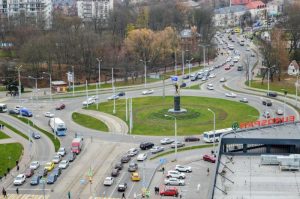A roundabout, which can also known as a traffic circle, is a point on the road where three or more roads intersect, and vehicles move in a circular direction around a traffic island. Roundabouts are famously known for helping in the smooth movement of traffic, and they also assist in ensuring the safety of both drivers and pedestrians. Here is a little history about the roundabouts.
Origin
Roundabouts have their origin in the United States though they are commonly used in Europe.
In the 1790s, Architect Pierre L’Enfant, who was also an engineer, proposed that some circular intersections be built in Washington D.C. He is also responsible for the famous Dupont circle.
The circular intersection which was designed for use in the automobile era was revived by William Eno, who was an American businessman. It was restored in 1905 for New York City’s Columbus Circle.
The American Roads Departments started to build roundabouts in the 1930s, which was a big step in their development. The engineers made roundabouts, which were large and allowed vehicles to change lanes. This design led to many crashes and also congestion, leading the United
States to lose favour in the model in the 1930s.
Upgrade
The British introduced another idea on roundabouts in an experiment in 1966. This was a big success, as it led to a decrease in the total number of crashes and delays by about forty per cent. The capacity of the roundabouts has amplified by about 10 per cent. This was implemented nationwide. This was when modern roundabouts were invented.
Some countries were more doubtful about the invention than others. Despite this, the British design spread all over the world. The United States implemented the modern roundabout despite some doubts. The concept gained popularity, and the number of roundabouts has continually been increasing.
Roundabouts have been of great importance in controlling traffic and ensuring safety in today’s
society.
